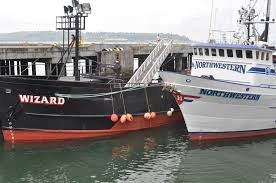Ted I’m going to have to defer to your opinion. You may well have a deeper understanding. Please post a reference. My limited and possibly incorrect understanding was loss of range running on a single engine was fairly vessel specific. Different if twin rudders then single. Different depending on how separated the screws are from each other and centerline. So how much helm is produced. Different depending on the peculiarities of that vessel. I further understood that autopilots use much more energy when the boat isn’t in balance and constantly fighting a helm. That in turn requires a hotter running alternator drawing more hp. So my post may have a false premise. Thought running a twin for days under one engine isn’t a great idea. Please expand on your post.
Most of the HP requirement to push a displacement hull through the water is the hull itself. Certainly there can be additional drag from opposing wind, waves, currents, rudder(s), and a disabled motor's propeller, but it's mostly the hull.
The numbers I'm most familiar with are from my boat.
At 8 knots the boat consumes 3.7 GPH or 74 HP.
At 7 knots 2 GPH or 40 HP
At 6 knots 1.2 GPH or 24 HP
Now if the boat were set up with twin engines the same as the single in my boat, I would expect an increase in fuel consumption 10 to 20%. I repowered my boat from 450 HP to 135 HP but kept the same transmission, shaft and propeller diameter (28"). The propeller is significantly larger than what you would expect for a 45' boat traveling 7 knots. As a result, the slippage remains fairly constant until you pass 7.5 knots.
1,000 +/- RPM equals 5 knots.
1,210 +/- RPM equals 6 knots.
1,440 +/- RPM equals 7 knots
1,850 +/- RPM equals 8 knots
It is my contention that my boat could be setup with twins the same as my single with 28" propellers, suffer an engine failure, reduce speed from 7 to 6 knots without loosing fuel range.
With regard to rudders, most twin engines boats have significantly smaller rudders than the same boat offered as a single. The thought is that you will likely jockey engines for docking and the prop wash from two engines striking two rudders is sufficient while underway with smaller rudders. I would make the rudders larger and of the foil design so the disabled engine's rudder acts like a sailboat rudder with the water passing by it.
I have seen this concept of two rudders several times recently with newer design sailboats. The rudders are designed so that when the boat is healing, one rudder is straight down and the other may be partially out of the water. When cruising down wind neither rudder points down and neither is in line with the keel. So it seems that two rudders could be designed for a twin engine boat where it wouldn't require as much rudder angle to maintain a straight course.
The power consumption for the autopilot really isn't an issue. First rudders should be balanced where 25 to 28% of the area behind the pivot point of the rudder, should be in front of the pivot point. The smaller the percentage, the more effort is required to turn the rudder underway. Secondly, most of the autopilot pumps for vessels in this size range are drawing less than 30 amps. The alternator on my single engine is rated 220 amps continuous duty.
In summary, most twin engine boats are designed to optimize twin engine use. It shouldn't be difficult to optimize for both. There are sailboats with off center single engines that seem to cruise down the AICW reasonably well and the boats with designed wing engine backups (Nordhavn) that seem to manage reasonably well. This is a concept with a very small market (passage making) so there aren't but a handful of production manufactures that would probably be interested in the concept. I would guess that Nordhavn with there new 40 ish foot build in Turkey has probably addressed some of these issues as that boat is setup with twins.
Ted


